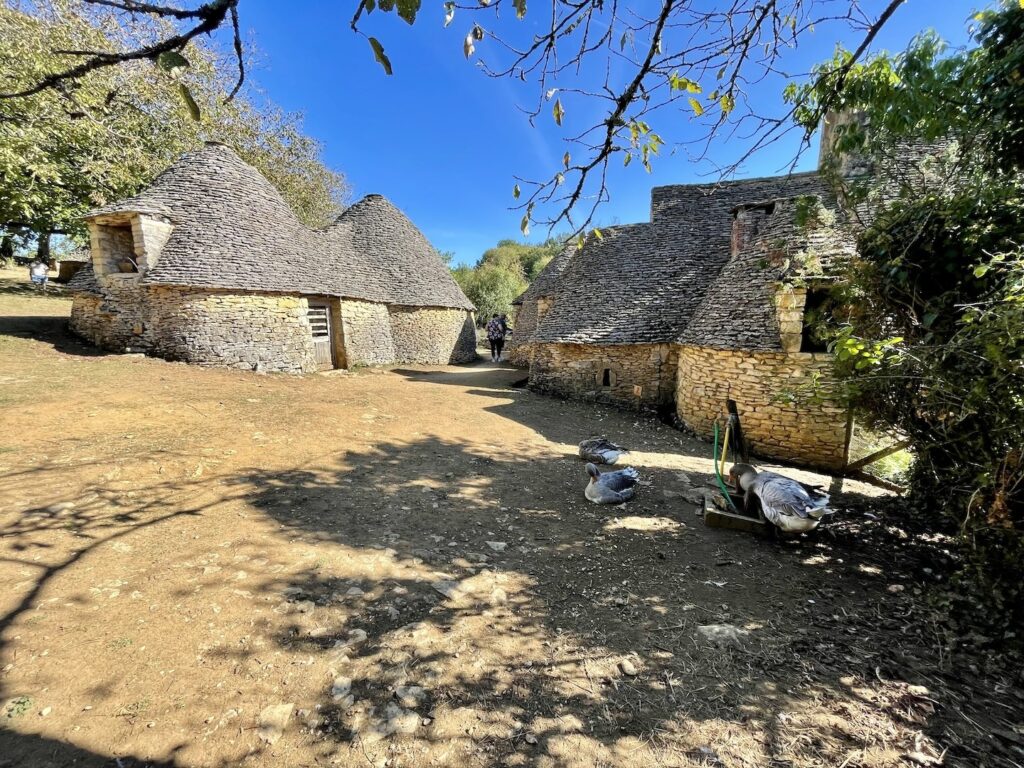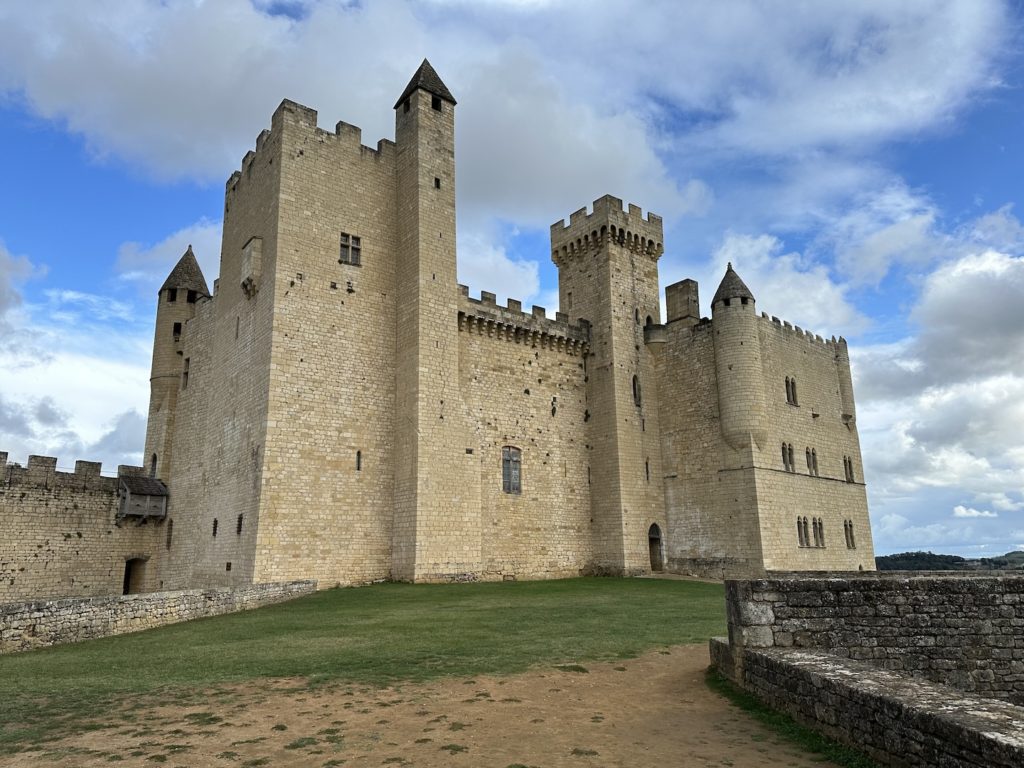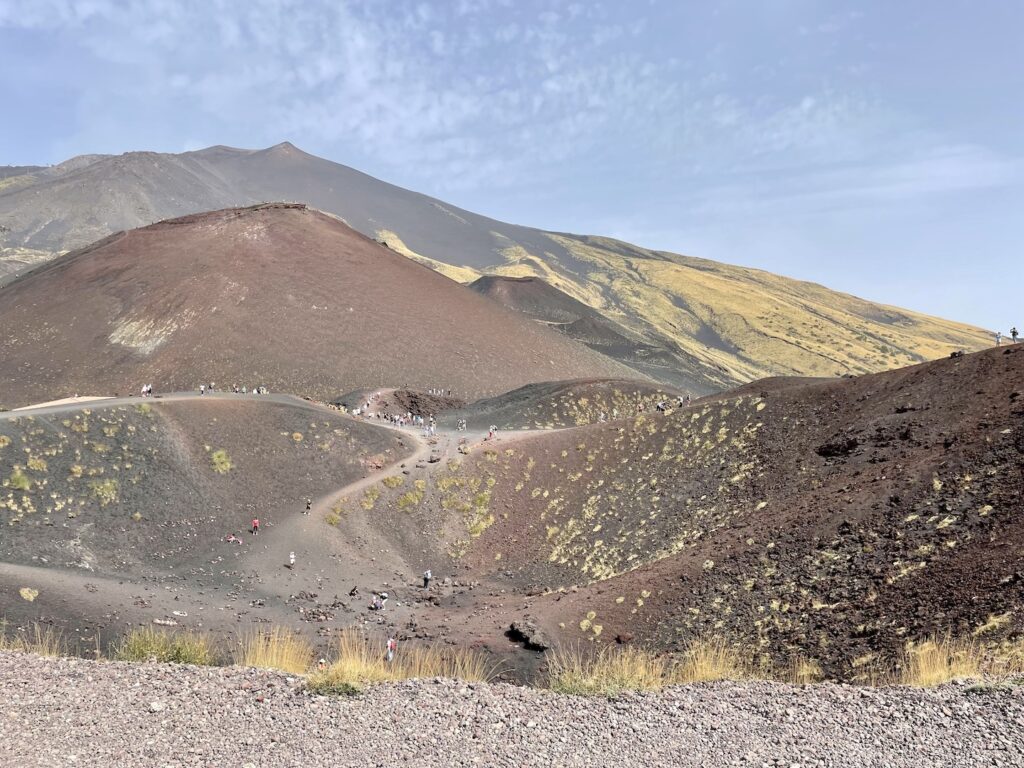Sarlat-la-Canéda (or as it is usually referred to, Sarlat) is an enchanting medieval town in southwestern France that is a great location to simply relax surrounded by historical charm. Here you’ll find buildings dating to the 13th century and a vibrant dining and shopping scene attracting today’s travelers. In addition, it’s the perfect home base from which to explore the surrounding region, including châteaux, historical sites, gardens, and ancient cave art. My husband and I had a wonderful experience staying in a short-term rental in the medieval heart of Sarlat, enjoying the town itself as well as the many attractions just a short drive away.
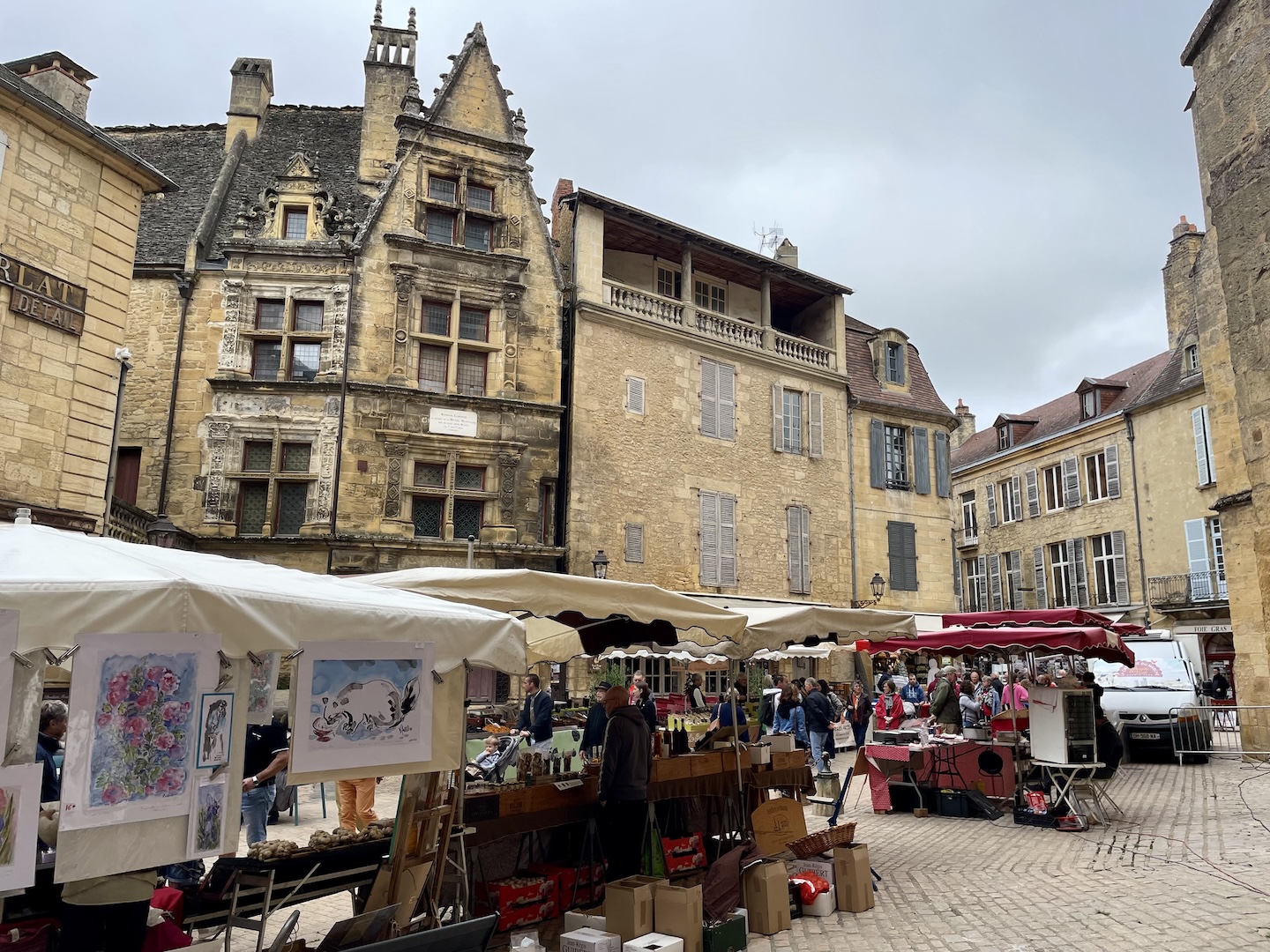
What to Do and See in Sarlat
1. View the Town from Above
To gain a bird’s-eye view of Sarlat, take the elevator ride up to the old bell tower of the decommissioned Sainte-Marie Church. The guide who takes you up will point out different buildings as you scan the 360-degree views. An English language handout explains what the guide discusses in French. Buy your ticket at the booth on the side of the church. Location: Behind Sainte-Marie Church, Place Jacques Boissarie
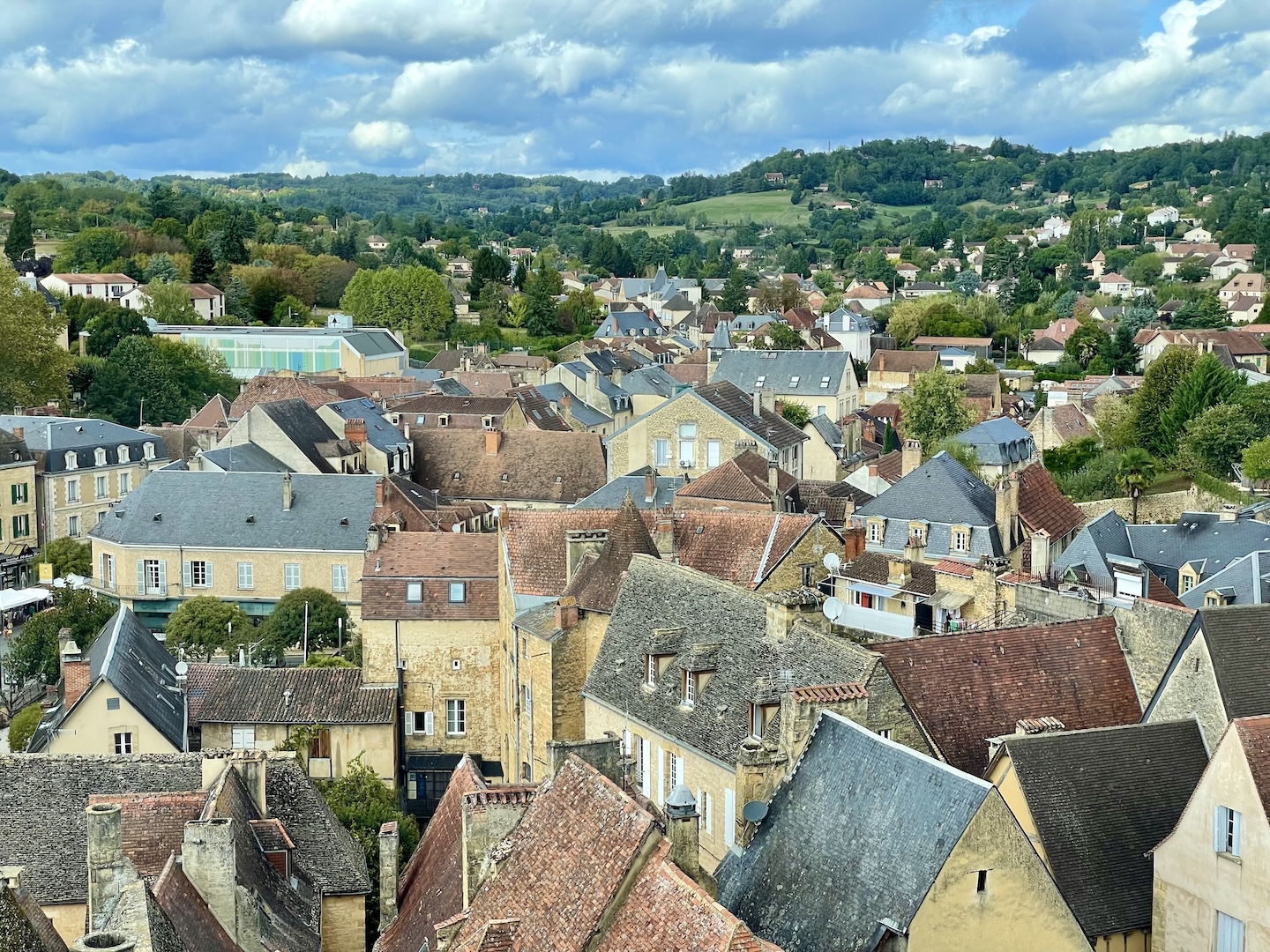
2. Snap a Pic at the Geese Statue
Why not?! The bronze statues of three geese in Place du Marché aux Oies (Goose Market Square) is a nod to the region’s specialty: foie gras. In fact, if you’re so inclined, you can visit nearby farms where they (force) feed geese for the eventual foie gras they produce. (Do a quick online search, if interested.) Location: Place du Marché aux Oies, by the Gisson Manor House
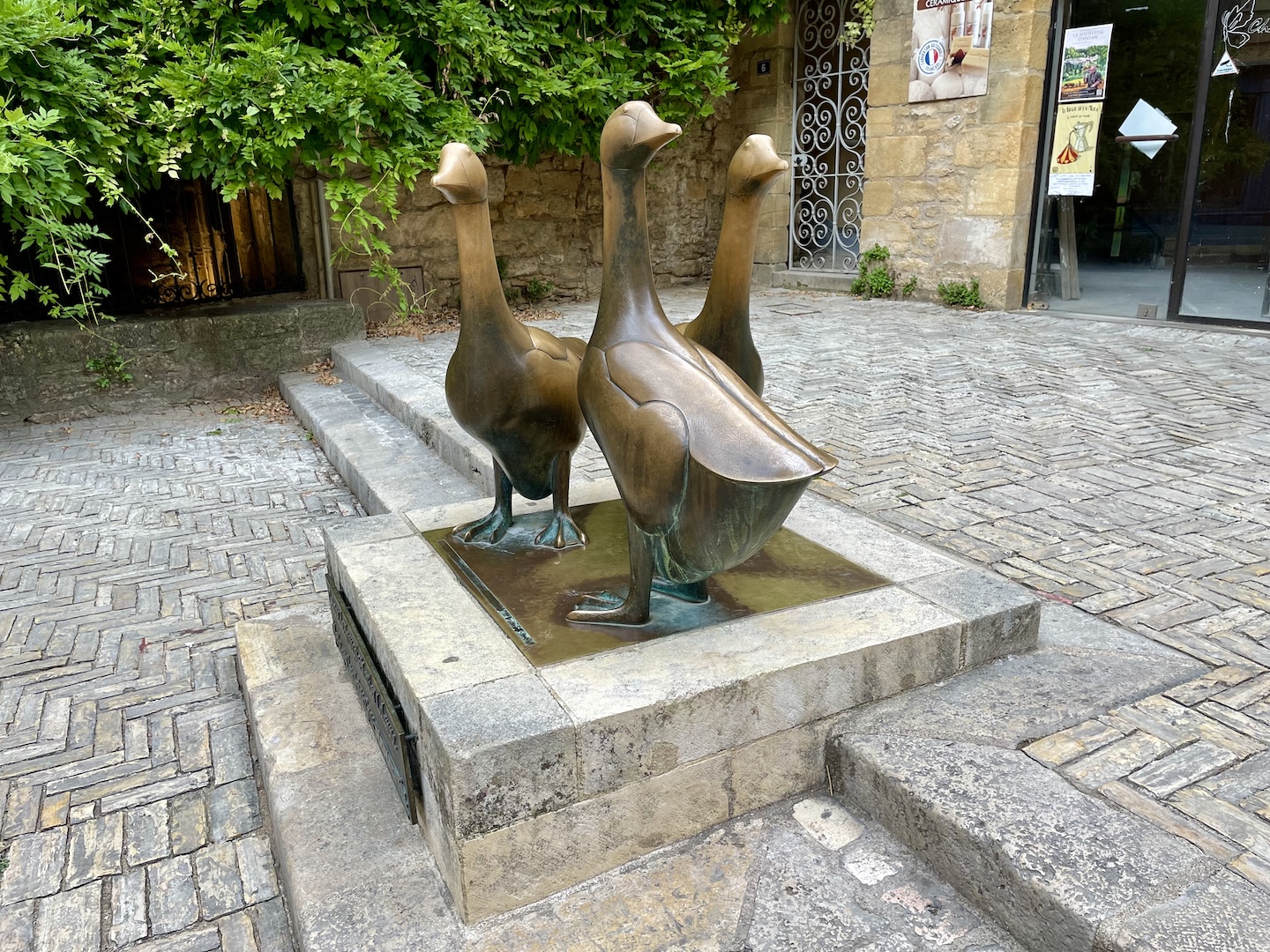
3. Tour the Manoir de Gisson (Gisson Manor House)
Steps away from the bronze goose statues sits the Manoir de Gisson, the home of the Gisson family in the 13th century. The manor house was formed from two residences joined by a central staircase in a tower. Its rooms are fully decorated and staged, so visitors gain a good understanding of how the family lived. The tour is self-guided, and there is an English booklet that will explain the contents of use of each room. Location: Place du Marche-aux-Oies
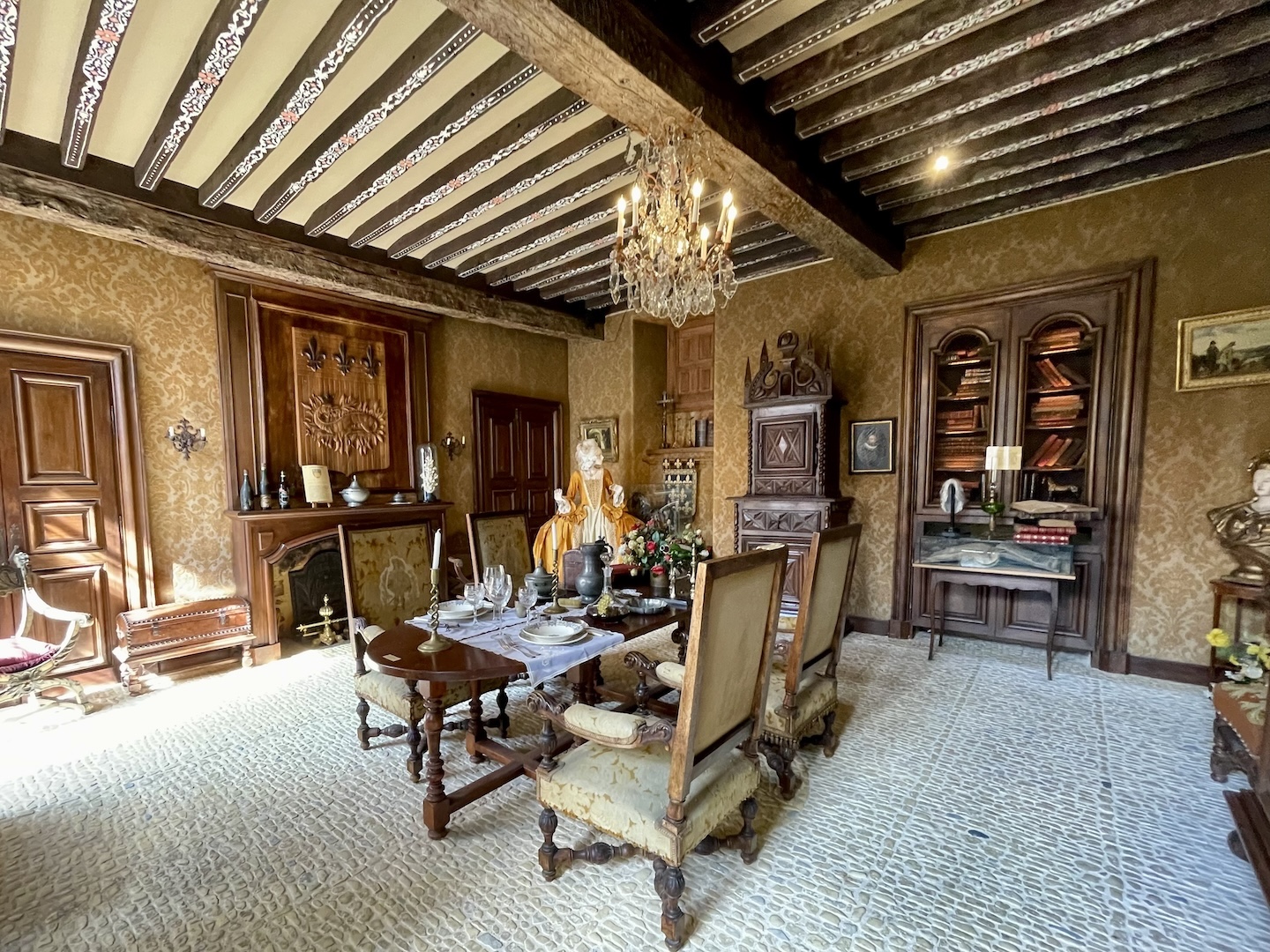
4. Stroll past the Maison de la Boétie
Constructed in the early 1500s, this building was the birthplace of writer Étienne de la Boétie (1530–63). Unlike wealthy families of the time who flaunted their wealth by incorporating towers in their homes, this family did so by embellishing the home’s facade with Italian Renaissance-style details. This building is not open to the public. Location: 3 rue de la Boétie
5. Saint-Sacerdos Cathedral
This church/abbey became a cathedral when the Pope at Avignon decided that it would house a bishop. Building began in the 14th century and the structure continued to be enlarged into the 16th and 17th centuries. Its organ over the entrance dates to 1752. Behind the Saint-Sacerdos Cathedral sits Lanterne des Cortes, a cylindrical tower dating back to 1170. It is thought to have been where people prayed for the dead. Location: up the hill behind Saint-Sacerdos Cathedral Location: Place du Peyrou
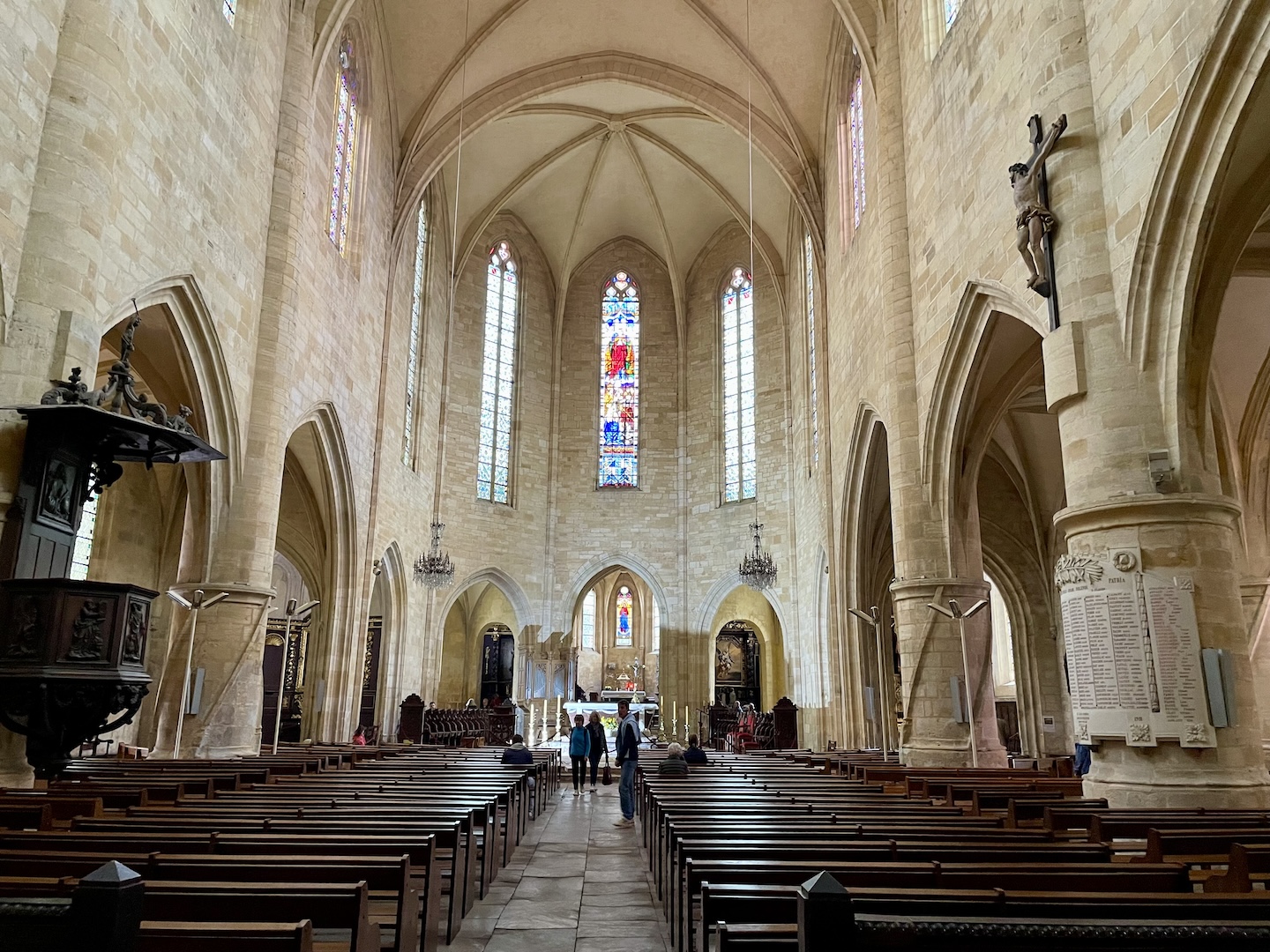
6. Wander through Town
The best way to enjoy Sarlat is to take your time walking through town, window shopping, and savoring the ambiance and food in its cafés and restaurants.
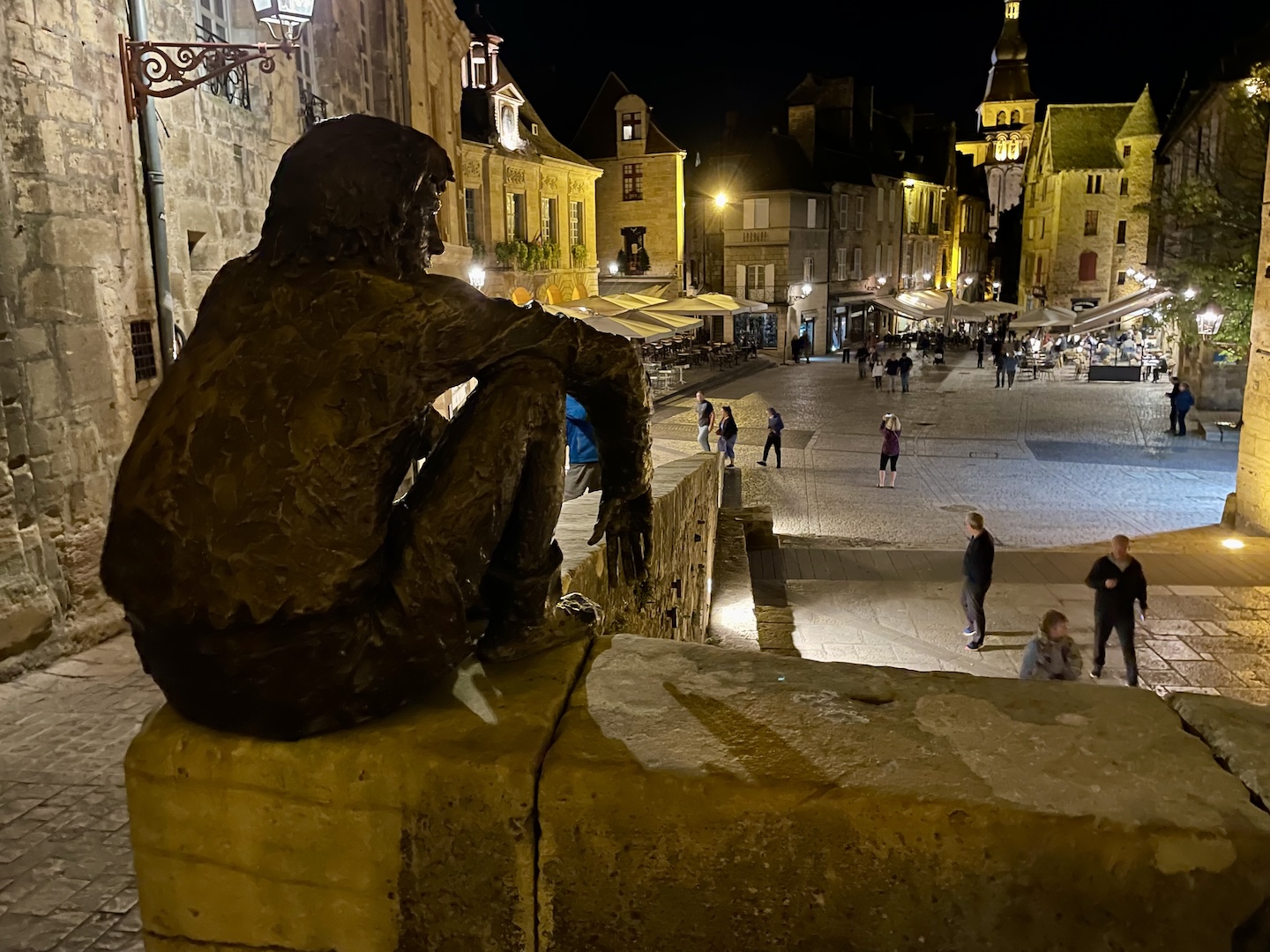
7. Visit the Saturday Market
A highlight for locals and travelers alike is the Saturday morning market in the medieval town center. Vendors sell locally grown/produced foie gras, truffles, honey, walnuts, fruit, vegetables, cheese, sausage, baked goods, wine, and non-perishable goods (like t-shirts, souvenirs, jewelry, and purses). There’s also a market on Wednesdays, but that usually lacks the variety of fresh foods. The Saturday market is the one to experience!
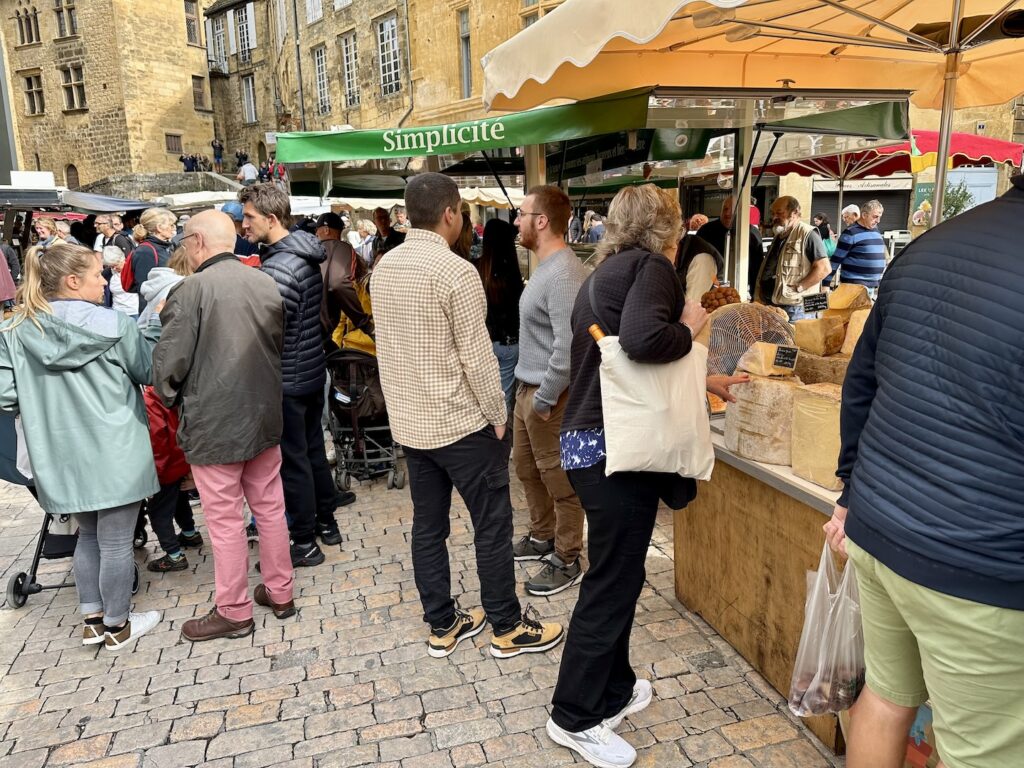
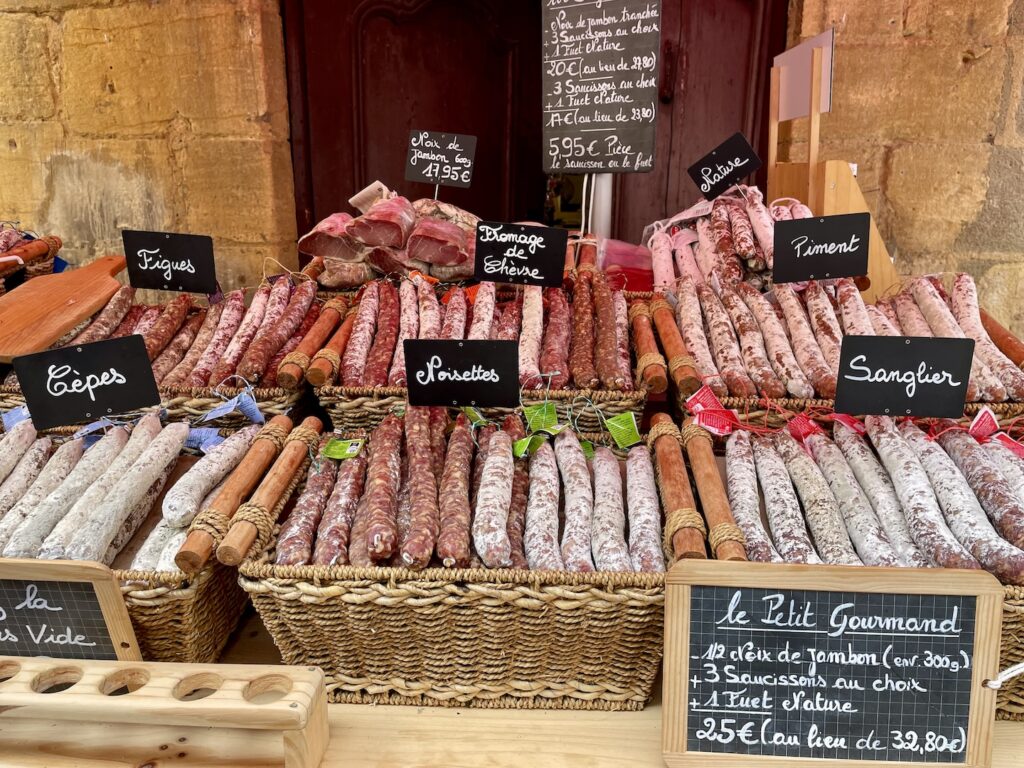
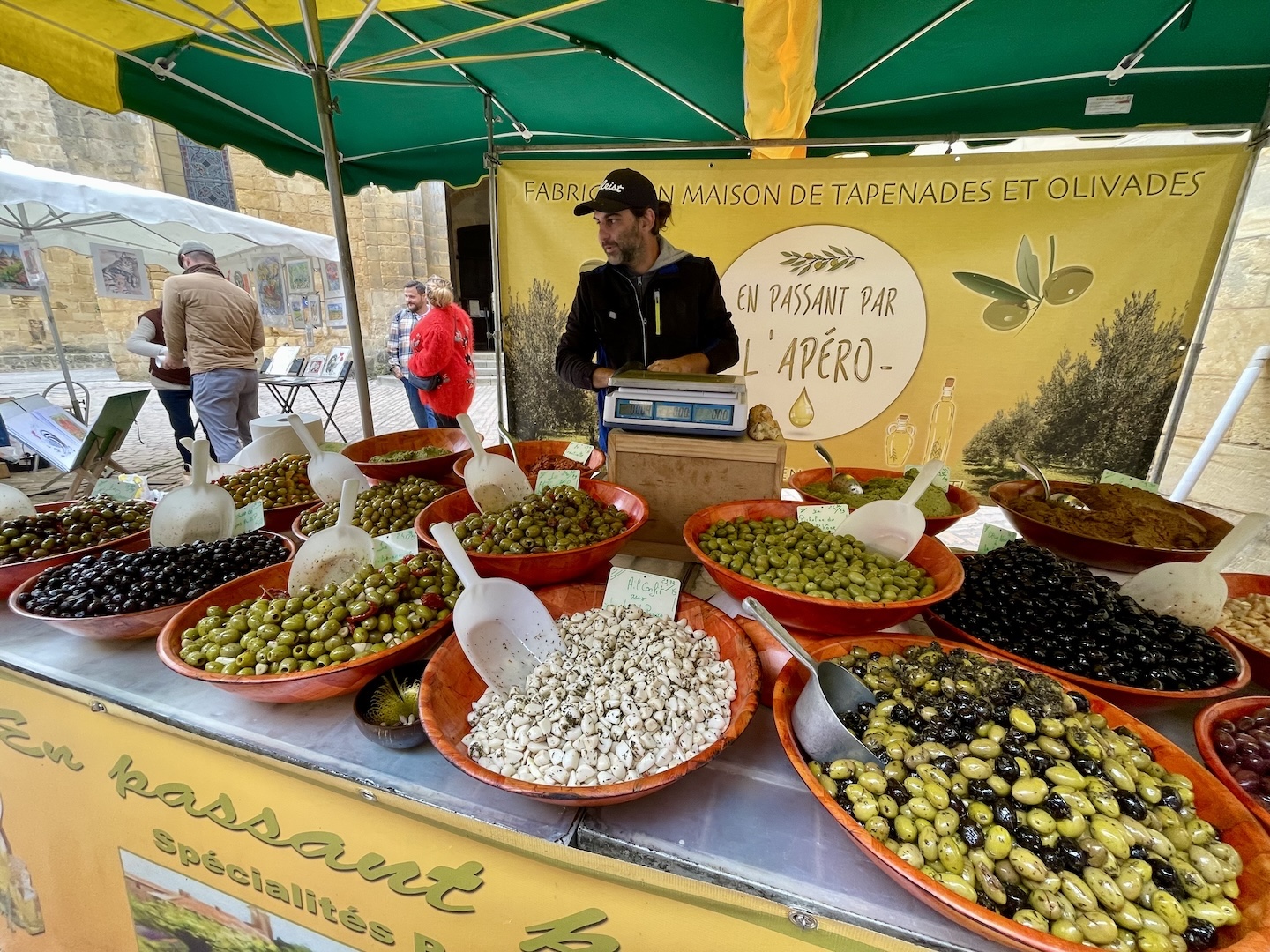
My husband and I savored the Saturday morning market while staying in a short-term rental in the heart of Sarlat. We purchased the makings of a charcuterie-based meal, storing each new item in a lightweight tote I brought from home, and then prepared a feast of locally grown and produced once we returned to our apartment.
8. Explore the Surrounding Region
As mentioned, Sarlat is the perfect anchor if you plan to visit the many sites a short drive away. Choose from centuries-old châteaux and fortresses, magnificent gardens, canoeing, ancient cave art, and other alluring, historical villages. Read my article, Best Day Trips from Sarlat, France for all the details on what you can experience in the Sarlat region.
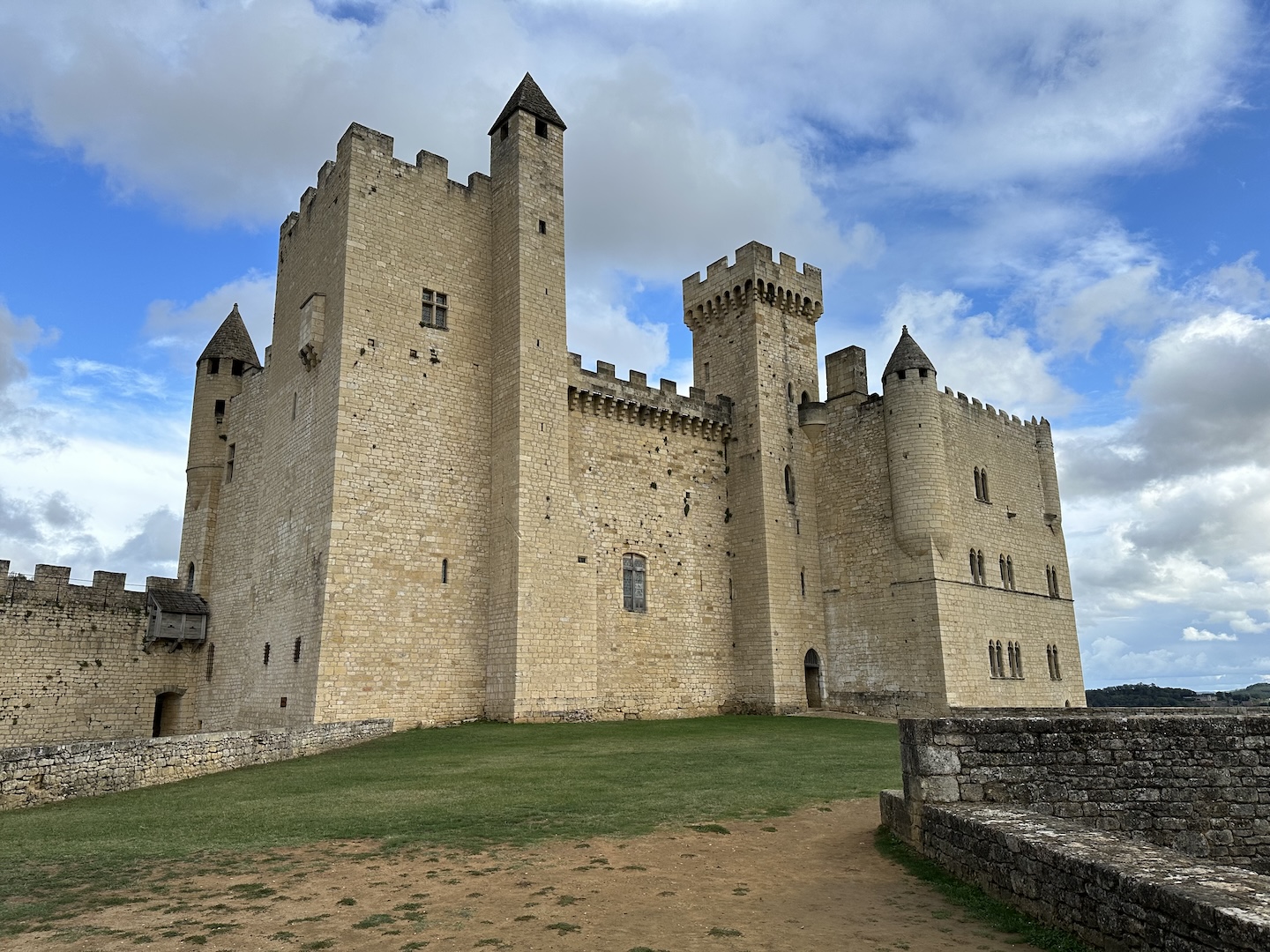
Map of Sarlat Region

Tips for Visiting Sarlat
- Sarlat is a popular destination and can be quite crowded in the popular summer travel months. Your best bet is to visit in the spring (April, May) or fall (September, October).
- Driving is the best way to explore Sarlat and its surrounding region. Expect some narrow, winding roads in the countryside. Your best bet is to use a GPS app (like Google Maps or Waze) to navigate to your destination.
- Expect some cobblestone streets, some of which are on inclines that can get a little slippery in wet weather.
- Do not be surprised if some shopkeepers or restaurant staff don’t speak English as this region is not as touristed as others like Paris, Bordeaux, or Lyon. Come prepared with a pleasant “Bonjour!” or “Bonsoir” (“Good Day” and “Good Evening”) and working knowledge of translation apps like Google Translate. Using these helpful apps will be your friend: they enable you to speak or type in your question in English, ask for a translation, and then show the other person your screen to read the translation. Also, when you’re touring a place (like Château de Beynac) or eating out, you can have the translation app scan the information or menu and then offer up a translation for you.
- Plan a Saturday visit to Sarlat – if you’re not staying in town – to experience the Saturday morning market that is set up on the streets of the town’s medieval center.
- To get the most out of your visit, consider a short-term apartment rental in or very near the historical heart of Sarlat. Doing so will provide a more authentic experience – and probably more space than staying in a hotel. Having a kitchen is a bonus, too.
- Search online for restaurants (e.g., TripAdvisor, Yelp) that appeal to your palate, so you find just the right ones to match your interests – and will be open the day you’re visiting.
- If staying in Sarlat, plan day trips to explore the countryside with its charming châteaux, villages, and lovely Dordogne river views.
- Visit Sarlat’s TI (Tourist Information) office – at 3, Rue Tourny – for helpful advice from the staff along with maps and guidebooks.
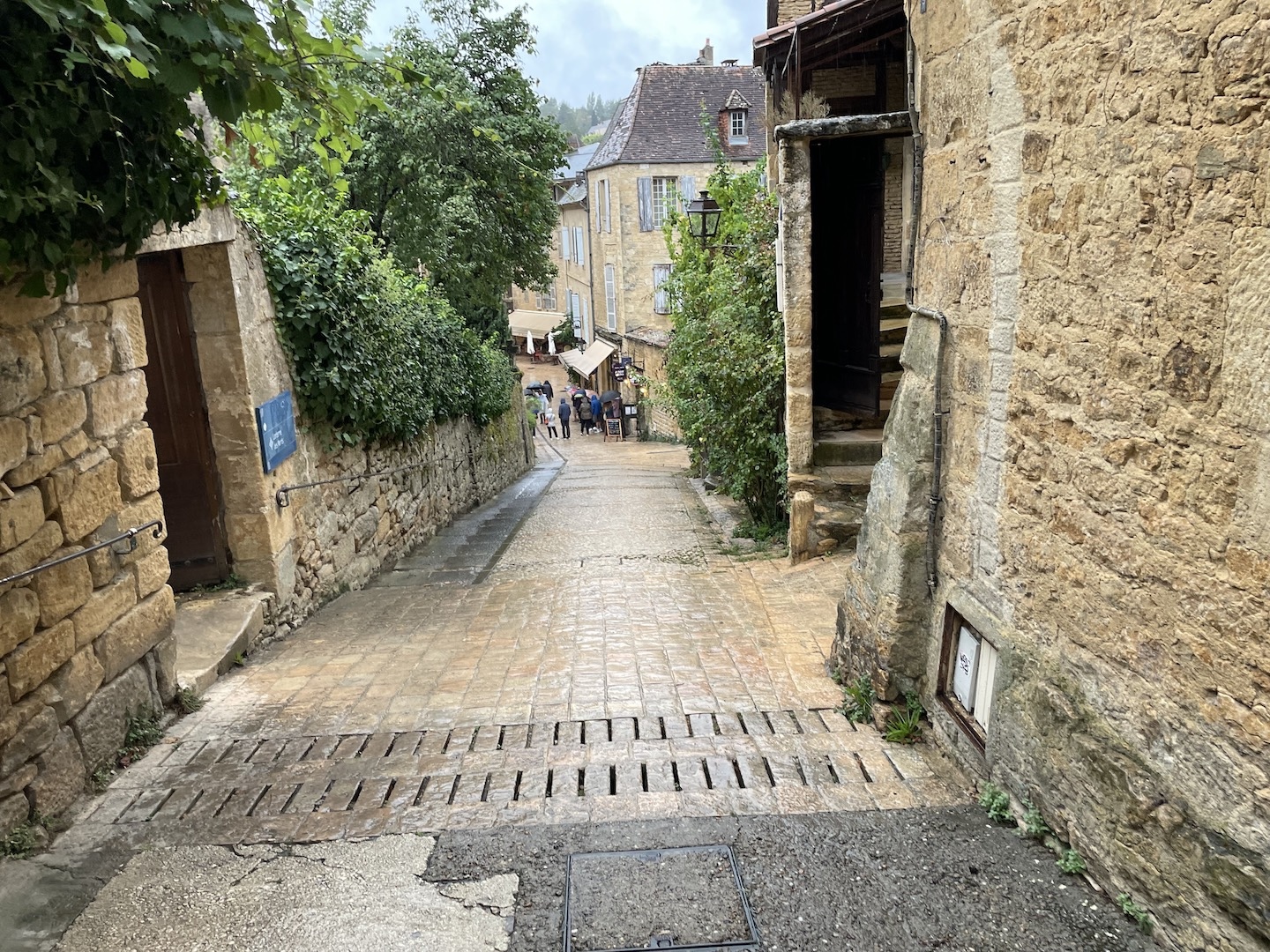
Where to Stay and Eat
Where to Stay
Although there are several hotels in Sarlat, I think the best way to experience the town is to rent an apartment for your stay. I found a lovely one on VRBO that provided more space than just about any hotel room. Having a kitchen enabled us to stock it with a few breakfast favorites so we could leisurely get ready each morning while eating and sipping our preferred hot beverages – coffee for Pop and tea for me. Also, the apartment provided dining space to spread out the delicious meal we created after visiting the Saturday morning market.
The bonus of renting the apartment was that my husband and I were less than a one-minute walk from the historical center of Sarlat. To learn the best things to consider when renting lodging, I invite you to read my article How to Find the Perfect Vacation Home Rentals.
Where to Eat
There are so many variables when finding great dining spots – types of cuisine, location, and days of operation – that it’s hard to recommend a place that will work for all fellow travelers. Therefore, I suggest you search online for the types of places that appeal to you and your group and that are open when you visit. Having said that and bearing in mind that we did also eat in our short-term rental, we enjoyed our meals at Restaurant L’Entrepôte and Le Bistrot.
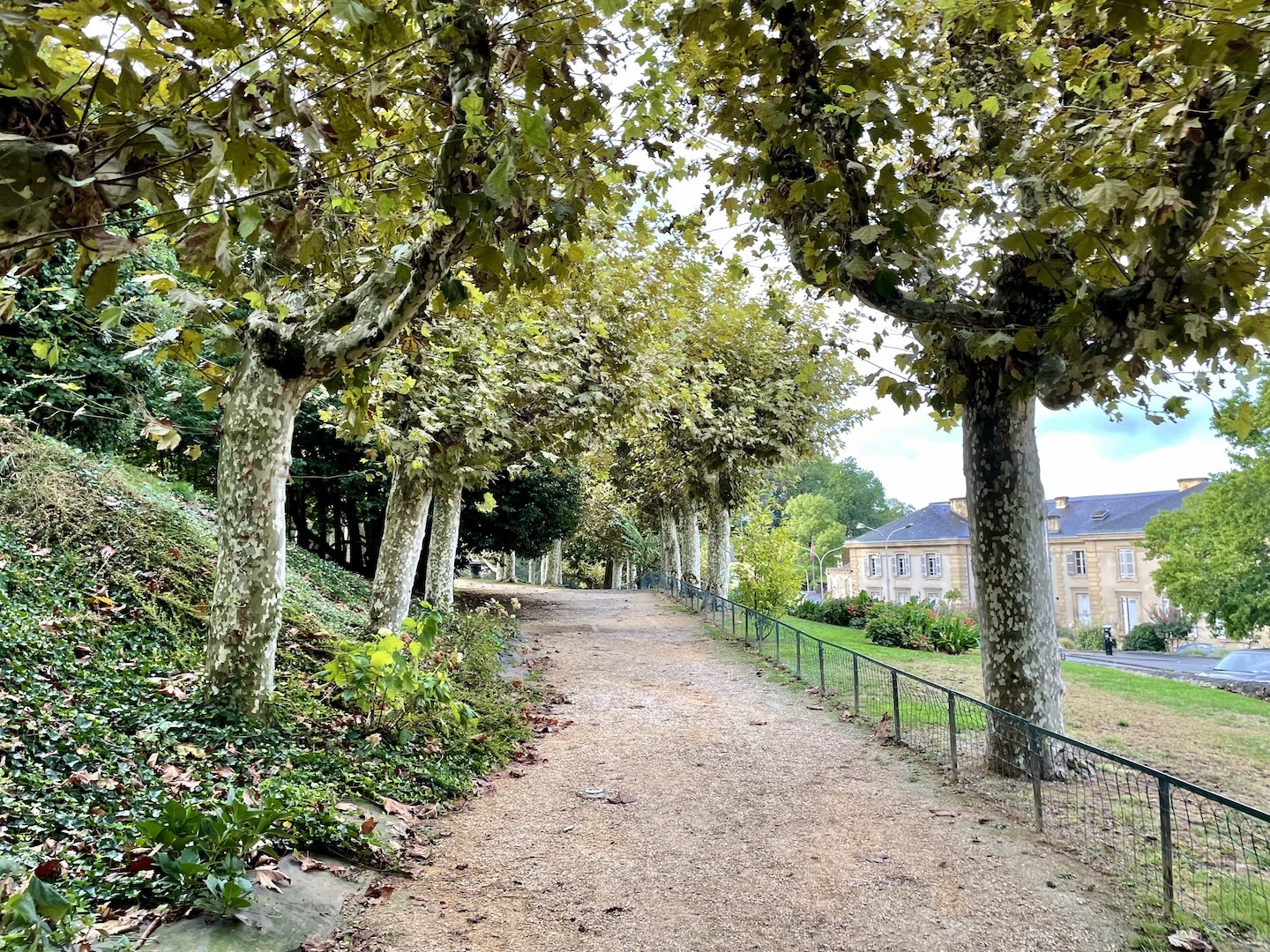
A Brief History of Sarlat
Once a walled medieval town, Sarlat had about 5,000 residents in the 13th century. During the Hundred Years War (1337-1453), Sarlat residents were loyal to the French king and the town served as a central locale for troops and supplies. The residents’ faithfulness to the crown was rewarded as the town prospered and grew after the war with the construction of new buildings —many in the Italian style favored by the new bishop from Florence. Infrastructure improvements continued through the centuries. In the 1900s, a concerted conservation effort was to protect the town’s history and heritage. Sarlat’s legacy continues to enthrall visitors today, and I highly recommend a stay in this delightful place.
Related Articles: France
- Best Day Trips from Sarlat in Southwest France
- Exploring France: Normandy, Brittany, Provence, and Paris
- French High-speed Trains: Tips for Your First TGV Ride
- Southwest France: Spend a Day Exploring Fascinating Châteaux and Gardens
Related Articles: Trip Planning
- Best Apps and Websites for Savvy Travelers
- Expert Tips for Traveling to Europe for More Fun, Less Stress
- Top 10 Tips for Driving in Europe
- Top 10 Tips for Renting a Car in Europe
- Travel Planning Timeline
Final Thoughts
It’s hard to explain what a great find Sarlat is for experiencing a small medieval French town and for the wealth of opportunities of historical sites and, incredible natural beauty a short drive out of town. If you’re planning to be in the general area – such as Saint-Émilion, Bergerac, Bordeaux, or even Toulouse – do yourself a favor and plan a stay in Sarlat. I left with so many great experiences and fascinating peeks into the past.
Comments?
Feel free to share your experiences visiting Sarlat and/or suggestions for other places to visit and things to do in the area. Your ideas could be helpful to other travelers. Thanks! 🙂

